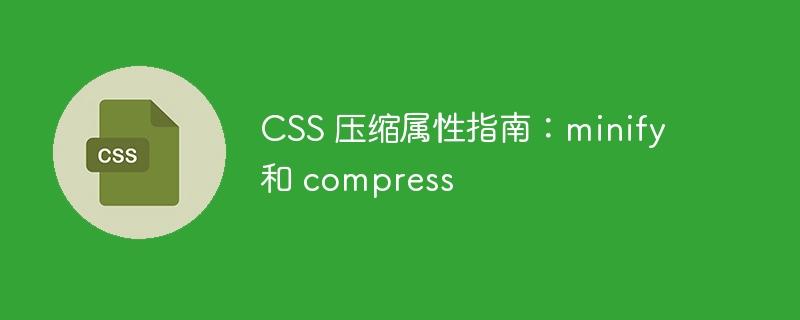

CSS compression property guide: minify and compress, specific code examples required
In front-end development, optimizing web page performance is a key task. Effectively optimizing CSS code can greatly improve the loading speed and user experience of your web pages. And compressing CSS is a common optimization technique that can reduce file size and increase page load speed. In this article, we will learn how to use minify and compress, two commonly used CSS compression properties, and provide specific code examples.
/* 原始 CSS 代码 */
body {
background-color: #f1f1f1;
color: #333;
font-size: 16px;
}
h1 {
color: #ff0000;
font-size: 24px;
}
/* 压缩后的 CSS 代码 */
body{background-color:#f1f1f1;color:#333;font-size:16px;}h1{color:#ff0000;font-size:24px;}In the above code example, the original CSS code contains multiple spaces and newlines, and the compressed code is compressed into One line, with unnecessary spaces and newlines removed. As you can see, the compressed code is more compact and the file size is reduced a lot.
/* 原始 CSS 代码 */
body {
background-color: #f1f1f1;
color: #333;
font-size: 16px;
}
h1 {
color: #ff0000;
font-size: 24px;
}
p {
color: #000;
font-size: 14px;
line-height: 1.5;
}
/* 压缩后的 CSS 代码 */
body{background:#f1f1f1;color:#333}h1{color:#f00}p{color:#000;line-height:1.5}In the above code sample, the original CSS code contains multiple CSS rules and declarations, and the compressed code removes useless CSS rules and declarations, and simplified color values, etc. The compressed code is more streamlined, reducing file size and load time.
Summary:
Compressing CSS is an effective method when optimizing web page performance. By using the minify and compress CSS compression properties, you can compress and streamline your CSS code, reducing file size and increasing page load speed. However, it should be noted that using compression attributes may affect the readability and maintainability of the code, so code compression and maintenance costs need to be weighed in actual development. I hope this article helps you understand and apply CSS compression properties!
The above is the detailed content of CSS compression property guide: minify and compress. For more information, please follow other related articles on the PHP Chinese website!




